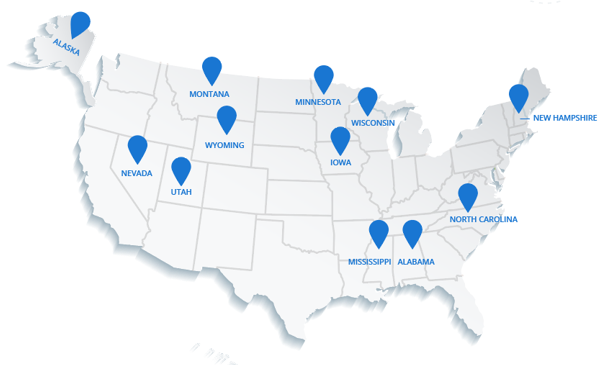Nurse Practitioners in the Operating Room: The Top 3 Key Responsibilities
By Author Jeni Page, ACNP-BC, MSN, RNFA, CCRN Editor Elizabeth Moran, MSN, RN, CPNP-PC Surgical Nurse Practitioners, who apply their advanced practice skills beyond preoperative and postoperative duties and into the operating room, play an integral role in improving patient care continuity. Nurse practitioners (NP) who combine their traditional provider role with first assist surgical responsibilities often support patients through each stage of the surgical experience; they follow patients from the initial outpatient clinical introduction to the hospital admission, operating room (OR) theater, and postoperative care setting including both the immediate inpatient stay and subsequent outpatient follow-ups. When surgical nurse practitioners utilize the full extent of their skills and training, they thereby provide patients with consistent care, a familiar face, and all-around improved healthcare experience.
What is the surgical scope of an NP?
For NPs functioning in the OR, responsibilities may overlap traditional inpatient and outpatient NP roles, or be isolated to operating room coverage. Scope of practice for surgical NPs is often dictated by governing certifying bodies, state licensing requirements and regulations, and institutional by-laws. Considering RNFA state licensing laws and hospital by-laws is important because they can vary significantly. Many states require NPs to also have their Registered Nurse First Assistant (RNFA) certification in order to function as first assist in the operating room. A RNFA is a surgical registered nurse who has completed the required program. There is a RNFA certification that consists of coursework, exams, and hands-on operating room experience. There are a few certifying bodies (e.g., NIFA) and the course generally takes 6 months. Institutional by-laws often vary according to the role of the first assist, with some requiring a first assist certification in addition to the nurse practitioner license and certification. In general, the requirement most frequently includes an acute care certification (e.g., ACNP, AGANCP) through an accepted certifying body. In addition to receiving the appropriate training and credentials, understanding key responsibilities is an important step for any NP transitioning into the operating room.
Top 3 NP Responsibilities in the Operating Room
In the Preoperative Setting:
Before the surgical procedure even begins, the NP is responsible for the evaluation of the preoperative workup, including labs, primary care and/or sub-specialty clearances, and any more invasive testing, when indicated. The focus of this evaluation is generally to determine the overall safety of the patient to endure both anesthesia and the ensuing postoperative recovery phase. On the day of surgery, NPs often meet the patient in the preoperative area, review the surgical procedure, including risks and benefits, and address any lingering questions, concerns, and/or perioperative/postoperative expectations.
In the Perioperative Setting:
Once the patient is in the OR, NPs assist the surgical team with positioning and preparing for the start of the case. NPs who have followed the patient may contribute beneficial information to the surgical team during this timeframe (e.g., prior injury requiring special positioning). After the initial incision, the NP's primary responsibility is to function as a first assist to the surgeon. The extent of duties may vary according to facility, hospital by-laws, and comfortability between the NP and the surgeon, but may include a vast range of requirements, including but not limited to assistance with exposure, retraction, hemostasis, graft harvesting, and implant placement. Once nearing the conclusion of the case, the NP will often independently finish the surgery by performing the incisional closure. Closures may vary according to the surgical site, surgeon preference, and institutional policy. At case completion, the NP may again assist the surgical team in repositioning the patient onto the hospital bed for transport to the recovery area.
In the Postoperative Setting:
Postoperative responsibilities follow the patient from the post-operative care unit (PACU) through admission to the inpatient unit and discharge home, and often even into the outpatient clinical setting for follow-ups. For patients admitted for postsurgical care, the surgical NP often writes the admission orders directing patient care, pain management, and other pharmacologic therapies. Inpatient rounding and eventual discharge are often included in the NP's postoperative care responsibilities as well. After discharge, outpatient clinical management, including incision monitoring, postoperative imaging, and therapy recommendations all fall within the scope of the surgical nurse practitioner's responsibilities. While simple surgical procedures may only warrant one or two clinic visits, more extensive surgical procedures may necessitate repetitive examinations throughout the postoperative recovery.
Why surgical NPs are important
RNFA Nurse Practitioners who participate in one or more aspects of surgical care provide both direct and indirect care to individual patients, as well as promoting patient safety and communication. Given that the need for surgery may be a particularly challenging, vulnerable, and stressful time for patients, NPs can serve as a source of support and encouragement. It can be special to the patient, and to the NP, to have an established relationship prior to their arrival at the hospital and then have the same support person follow them through the continuum of their stay. NPs often go above and beyond their clinical duties to function as a calming and supportive advocate addressing fears, concerns, and questions, and establishing expectations for after the completion of the procedure. Beyond the patient care benefits, the cost of a surgical NP is often paid for through the indirect benefits of improved, consistent, and thorough patient care— not to mention surgical billing fees. In the operating room, NPs may bill as an assistant-at-surgery for any surgical intervention that necessitates an assistant. Though reimbursement and applicability are dependent on the insurer, The Centers for Medicare & Medicaid Services (CMS) reimburses for NP services in the operating room at 85% of the amount a physician is paid. With the rapidly expanding role of NPs, both in and outside of the operating room, the advantages of having an NP assist patients as they navigate through the surgical spectrum are overwhelmingly positive. Ultimately, the goal of improved care and superior patient outcomes outweighs the commitment and financial requirements necessary for acquiring and training a Nurse Practitioner for the Operating Room.
References:
Advanced Practice Registered Nurses, Anesthesiologist Assistants, and Physician Assistants. Department of Health and Humans Services, Centers for Medicare & Medicaid Services 2016. https://www.cms.gov/Outreach-and-Education/Medicare-Learning-Network-MLN/MLNProducts/Downloads/Medicare-Information-for-APRNs-AAs-PAs-Booklet-ICN-901623.pdf Accessed November 21, 2019.AORN Position Statement on Advanced Practice Registered Nurses in the Perioperative Environment. Association of Perioperative Registered Nurses (AORN) 2014. https://www.aorn.org/guidelines/clinical-resources/position-statements Accessed November 19, 2019.Rothrock JC. Alexander's Care of the Patient in Surgery, 15th ed. St. Louis, MO: Elsevier: 2015.
This article was originally published on Melnic. It was recently acquired by DirectShifts.
If you are currently looking for job opportunities, click on the links below to apply for openings with healthcare leaders. Click here to sign up on DirectShifts.
July 10, 2022




Comments